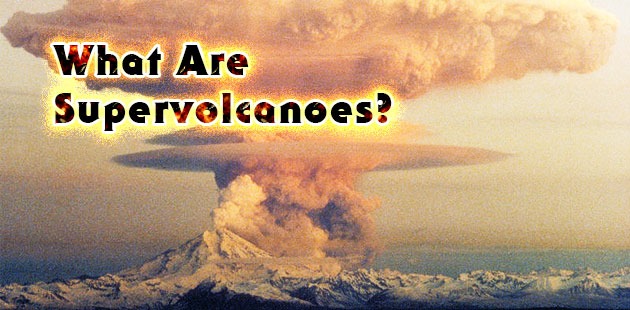All of us are familiar with what volcanoes are, but only few are aware of the existence of supervolcanoes.
What made these volcanoes super?
They erupt on a massive, 1,000 times more destructive scale than regular volcanoes. Supervolcanoes can produce an eruption with an ejecta volume of at least 1,000 cubic kilometers, or 240 cubic miles of volcanic material, while large volcanoes erupt at around 1 cubic kilometer. A supervolcano forms a depression called caldera, and often has a ridge of higher land around it. The devastating event of a supervolcanic eruption rarely occurs – they are hundreds of thousands of years apart – and not one has happened in recorded history.
Where did the term “Supervolcano” came from?
Supervolcano is a term that is only used recently. The origin of the word is linked to an early 20th century scientific debate about the features and history of the Three Sisters volcanic region of Oregon in the United States. Geologist Edwin Hodge suggested in 1925 that a very large volcano, which he named Mount Multnomah, had existed there. He theorized that the several peaks in the Three Sisters region are remnants left after Mount Multnomah was largely destroyed by violent volcanic explosions in his book called Mount Multnomah, Ancient Ancestor of the Three Sisters. In 1948, volcanologist Howard Williams disregarded the possible existence of Mount Multnomah in his book The Ancient Volcanoes of Oregon. The following year, another volcanologist named F. M. Byers Jr. reviewed William’s work and referred to Mount Multnomah as a supervolcano.
After Byers, it took 50 years before the term showed up again. It appeared in a Science News articles about massive volcanoes in the solar system. It wasn’t until 2000s that the term “supervolcano” reappeared in scientific literature. Popularization of the term occurred in 2005 when the BBC used it as a title for a Discovery Channel docudrama to refer to eruptions that produce extremely enormous amounts of ejecta. Scientific professionals that communicate science to the public use the term.
How are they formed?
Supervolcanoes form when magma in the mantle rises to the lower crust from a hotspot, but is unable to break through the crust. Pressure builds in a huge and growing magma pool until the crust cannot contain the pressure any longer. An uplifted bulge begins to form under the lower crust as the magma pool enlarges. Eventually, cracks would appear on the surface, with gas and ashes erupting from the magma pool through the cracks.
Over thousands of years, the pressure builds up and when eruption eventually happens, it drains the magma pool and the land above collapse down under, creating a depression called caldera.
What are the effects of supereruption?
Eruption of supervolcanoes are the most devastating of all natural disasters. It is comparable to giant asteroid strikes, and can cause mass extinctions and long-term climate changes. Ash blown high into the atmosphere during an eruption can cause sunlight to be blocked for several years. The Earth’s atmospheric temperature is lowered, and sometimes these changes trigger mini-ice ages.
On the Volcano Explosivity Index, supervolcanoes are an 8 on a scale from 1 to 8. Each leap up the scale signifies an increase of explosive scale of 10 times the power. Mt. St. Helens in Washington State was VEI 5.
The last known eruption of a supervolcano happened around 70,000 years ago on the site of today’s Lake Toba in Sumatra, Indonesia. It is theorized that it caused a global volcanic winter that blocked the sun for six to ten years, and it may have killed more than half the world’s population that time.
In Wyoming 600,000 years ago, a supervolcano located in today’s Yellowstone National Park ejected more than 1,000 cubic meters of lava and ash to the atmosphere – an eruption 2,500 times larger than the 1980 eruption of Mt. St. Helens. It was enough to bury a large city several kilometers deep. By comparison, the eruption of Mt. Pinatubo in the Philippines during 1991, which caused a 0.4-degree drop in the average global temperature in 1992, was 100 times less violent than the Yellowstone eruption.
Another recently suspected supervolcano was Mt. Vesuvius, which eruption buried the Roman town Pompeii in Italy two thousand years ago.

